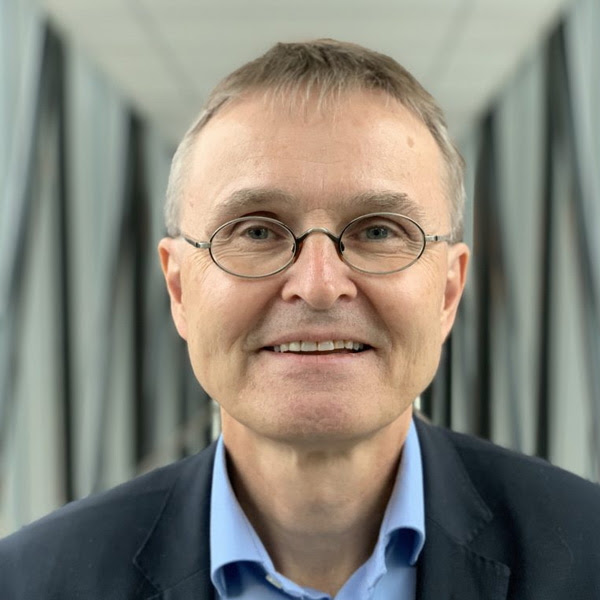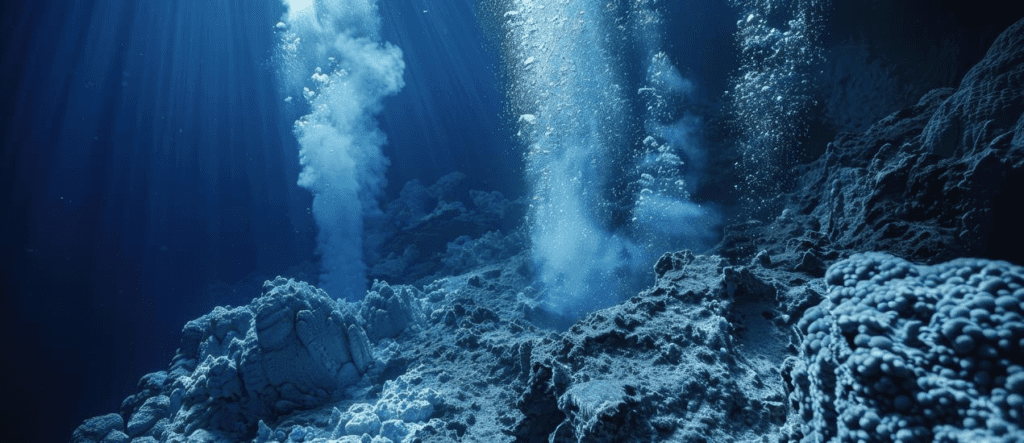
As demand for critical minerals escalates, stakeholders worldwide are looking towards the seabed as a potential solution to supply constraints. With geopolitical tensions, environmental concerns, and technological advancements shaping the conversation, the upcoming First Deep Sea Minerals Conference at Nor-Shipping 2025 aims to facilitate critical discussions on the future of sustainable extraction. We spoke with three domain experts—Hans Petter Klohs (HPK), Executive Director & Co-founder of Adepth; Ståle Monstad (SM) Board Member, Green Minerals; and Egil Tjåland (ET), Secretary General of the Norwegian Forum for Marine Minerals (NMM)—to explore the challenges, opportunities, and necessary steps for responsible deep-sea operations.
Why is there a need for the Deep Sea Minerals Conference, and what are its key objectives?
ET: The Deep Sea Minerals Conference is urgently needed as global demand for critical metals grows amid declining terrestrial supplies and rising environmental concerns. A multidisciplinary platform where industry leaders, policymakers, and scientists can exchange ideas on innovative extraction technologies and sustainable practices is vital to development. This can be key in creating cross-sector collaboration, and helping shape adaptive regulatory frameworks that balance commercial interests with marine conservation.
SM: Beyond supply shortages, the conference also presents an opportunity for the maritime industry to position itself at the forefront of a new market. We need to explore innovative technologies and strategies that can make deep-sea minerals both economically viable and environmentally responsible.
Which minerals offer the greatest potential for extraction and value creation?
HPK: The Norwegian Continental Shelf (NCS) holds promising reserves of copper, gold, and rare earth elements (REE), while international waters are rich in nickel, cobalt, and REEs. These materials are fundamental for the energy transition, AI advancements, and strengthening supply chain security.
SM: Copper is the essential metal for electrifying the energy system. To achieve net-zero emissions by 2050, global copper production must increase more than threefold (IEA, 2021). However, onshore copper is becoming increasingly scarce. Since 2018, only one major discovery has been made, and ore grades continue to decline. For instance, the largest copper mine in Northern Europe, Sweden’s Aitik mine, operates with an ore grade of just 0.17% copper. In contrast, the Norwegian Exclusive Economic Zone (EEZ) holds significant copper deposits, with expected grades ranging from 4% to 6%.
ET: Manganese nodules contain valuable metals such as manganese, nickel, copper, and additional cobalt, and are abundant in a number of deep-sea regions. Their high metal concentrations offer an attractive alternative to land-based mining, potentially stabilizing supply chains and reducing geopolitical risks.
How do deep-sea minerals compare to terrestrial sources in terms of quality, availability, and accessibility?
HPK: Seabed minerals are like a “kinder egg”—higher grades, lower capital and operational expenses, and reduced environmental impact compared to land-based mining.
ET: Indeed, deep-sea deposits often have higher metal concentrations and are geologically more uniform. However, extraction presents significant technological challenges. While deep-sea mining requires substantial investment in infrastructure and innovation, the long-term benefits of stable supply chains and diversification outweigh these hurdles.
What regulations currently exist, and how will they develop in the coming years?
HPK: Norway approved the seabed mineral law for the Norwegian EEZ in 2019 and is in the process of finalizing detailed regulations covering all phases of seabed mining. From the second half of 2025, a complete framework will be in place for both exploration and extraction.
ET: At present, deep sea mineral extraction is primarily governed by the International Seabed Authority (ISA) alongside national regulations from coastal states. These rules aim to protect the marine environment, ensure equitable resource sharing, and promote sustainable development. In the future, we expect a more harmonized and adaptive global framework that will integrate emerging technologies, environmental monitoring data, and stakeholder feedback to continuously refine regulatory measures, ensuring a balance between economic growth and ecological preservation.
What regulatory approach is needed to balance commercial viability with environmental protection?
HPK: Decision-making should be based on facts, not fear. A stable and predictable regulatory framework is essential to attract responsible investment and drive innovation.
ET: A balanced approach should focus on:
- Sustainable extraction technologies that minimize environmental impact.
- Adaptive regulations that evolve with scientific progress.
- Collaborative governance involving industry, governments, NGOs, and local communities.
- Ecosystem-based management to continuously monitor and protect biodiversity.
What are the primary environmental risks, and how can they be mitigated?
HPK: The biggest concerns are sediment plumes and biodiversity disruption.
ET: Indeed, risks include habitat destruction, sediment plumes affecting marine organisms, underwater noise pollution, and the release of potentially harmful substances. To mitigate these, we need:
- Thorough environmental impact assessments before operations begin.
- Best-practice precision mining to minimize ecological disruption.
- Real-time environmental monitoring systems.
- Adaptive management strategies and designated marine protected areas.
In short, the goal is to reduce the ecological footprint of operations while enabling successful resource extraction.
How can underwater radiated noise be managed in deep-sea mining?
SM: We recognize that noise can travel long distances horizontally in water. In deep-sea mining, the primary noise source comes from the pumps used to lift ore to the surface. To address this, production concepts developed for the Norwegian deep-sea mining industry have mitigated the issue by placing all pumps on the surface vessel, effectively eliminating noise from the water column.
ET: Other noise mitigation strategies include:
- Developing quieter machinery with noise-dampening designs.
- Adjusting operations to avoid peak biological activity periods.
- Establishing strict noise limits and quiet zones in sensitive marine areas.
- Using advanced acoustic sensors to monitor and manage noise output in real time.

Which geographical areas are emerging as key hotspots for deep-sea minerals?
HPK: Countries with strong Exclusive Economic Zones (EEZs) have an advantage over international waters being regulated by the International Seabed Authority. Norway, India, the Cook Islands, and the United States (all EEZ) are among key areas of interest and development.
ET: The Norwegian sector has just been opened for deep sea mining, with a large resource base mapped by the Norwegian Offshore Directorate for polymetallic sulphide deposits in addition to polymetallic manganese crust. A forthcoming license round will give opportunities for a fast-track development of deep sea mining. In addition the Clarion-Clipperton Zone (CCZ) in the Pacific Ocean is already recognized as a prime hotspot, rich in polymetallic nodules containing manganese, nickel, copper, and cobalt. Other emerging regions include parts of the Indian Ocean and the Southern Ocean, where deep-sea hydrothermal vent systems host polymetallic sulphide deposits. These areas are attractive not only due to their resource potential, but also because of their relatively stable geological settings and the opportunity for large-scale, sustainable extraction.

What are the key focus areas for collaboration and knowledge sharing in this emerging industry?
HPK: The Norwegian oil and gas sector has thrived for 50 years through experience, technology, and data sharing. The same approach should be applied to deep-sea mining—collaborating across extraction licenses to drive informed decision-making and economies of scale.
ET: A collaborative approach is absolutely essential. Key focus areas should include:
- Technological innovation and research: Joint research in exploration, robotics, remote sensing, and extraction technologies.
- Environmental science: Sharing knowledge on marine ecosystems and developing advanced impact assessment methods.
- Regulatory policy: Building consensus on international standards and best practices.
- Economic analysis: Evaluating market dynamics and the economic feasibility of extraction projects.
- Social engagement: Integrating the perspectives of local communities and indigenous groups.
- Strengthening interdisciplinary teams comprising engineers, marine biologists, geologists, economists, and policymakers is crucial to achieving both industry growth and societal benefits.

What are your key messages to the Nor-Shipping audience?
HPK: Seabed minerals holds the promise of becoming a “triple win”—for people, the planet, and profit. This industry can be a new “super profit” sector creating well paid and resilient jobs in the maritime sector for many countries including Norway, delivering low impact minerals enabling the energy transition, enhancing supply chain resilience, and supporting democratic economies by reducing dependency on monopolized sources.
ET: The industry must embrace deep-sea mining as a frontier for sustainable innovation. Success will rely on leading by example in adopting environmental best practices, recognizing the essential role of deep-sea minerals in securing long-term resource supply, fostering cross-industry and international collaboration, and ensuring a balanced approach that delivers economic returns while protecting marine ecosystems.
As the seabed minerals industry moves from exploration to commercialization, responsible leadership and forward-thinking policies will be critical. The discussions at Nor-Shipping 2025 will play a key role in shaping a sustainable, transparent, and economically viable future for deep-sea minerals.
To discover more about Nor-Shipping, taking place in Oslo and Lillestrøm 2-6 June 2025, please see – www.nor-shipping.com For more on the first Deep Sea Minerals Conference please see – https://nor-shipping.com/the-1st-deepsea-minerals-conference





